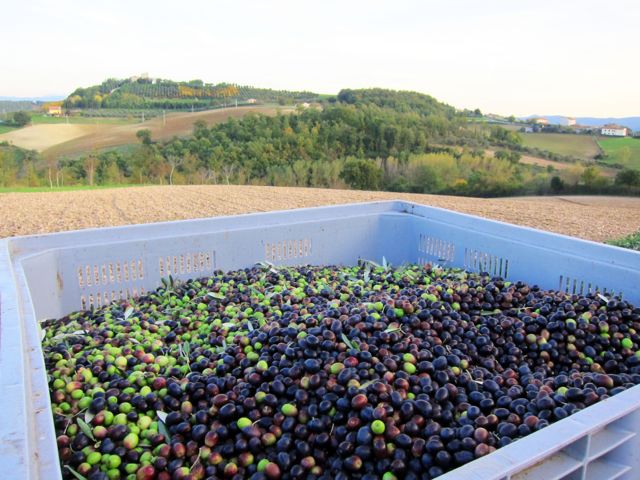
I’ve been meaning to write about making olive oil for a long time. Like, about 3 years. Ever since I started this blog. I even took some video, and thought that for sure by now I’d have written about it.
But the problem is that the topic is so huge, I just didn’t know where to begin. So what I’ve decided to do is share a few photos with you, as well as a short video. And tell you a bit about our own personal olive oil making.
As you probably know, we have a house up in Umbria. It’s set on 3 hectares of land and has about 120 olive trees. All of the trees were there when we bought the place, about 20 years ago. Like the house, the trees had been abandoned for about 30 years by the time we got to them. While they are beautiful to look at, they have never been the most productive of plants. Even though we’ve had them pruned and fed them lots of tasty manure over the years, their output is never reliable.
And then there’s the fact that we are in Umbria. Some years there’s a late frost that nips the buds off. Other times there are torrid summers that make the olives either fall off, shrivel up or get attacked by bugs.
It’s a miracle we ever get any oil at all.
But we do. Not every year. But enough to keep us in oil that we’ve produced ourselves. In a good year we’ve gotten about a 120 liters of oil. In a bad year….we’ve made do with last year’s oil.
We usually try to do most of the picking ourselves. We invite friends over for a long weekend, and if there are enough of us, we can get quite a bit done. (Some of the photos below are when I invited the interns from the American Academy’s Rome Sustainable Food Project out to help us out. Learning experience for them. Free labor for us!)
This year we had barely any olives. We had drastically pruned last year, so we only got about 220 kilos of olive. Although they picking went very fast, sadly we weren’t around to take the olives to the mill ourselves. I say sadly, because this is my favorite part.
And this is something that I’ve realized most people don’t know about olive oil. Even though a lot of people have their own trees, only big commercial producers have their own olive mills. Everyone else takes their olives to the local mill. It used to be that there was one guy in each village. But these days the process has changed so radically, with new machinery and methods, that there are at least six frantoi – olive mills – to choose from in our area.
Over the years, we’ve tried almost all of them. From the simple local guy in the next village to the newfangled, state-of-the-art machinery in town.
This year we sent our measely 220 kilos to the newest place around. Since their machinery was so advanced, they were able to handle our small batch. The old fashioned places require a minimum of at least 500 kilos or so to be able to press your own olives separately.
Tthe new place was pretty impressive. And our oil this year was actually the best ever. But somehow, when we went to pick up our 30 liters of oil, I didn’t end up taking any photos of the mill itself. The bright shiny machinery just didn’t inspire shutter to go off. Jane was better about it, and you can see a great photo here.
While I know the new places produce a cleaner, less oxidized and maybe more flavorful and stable oil I still love heading down to the old mill that belongs to Moreno. It’s located in a small building on the outskirts of our village. As farmers hang out outside, Moreno struggles to make the ancient machinery work for just one more year. Since all of the olives, olive paste and oil is out in the open – not closed up in stainless steel machinery – there is an intensely pungent smell of olive oil mist the moment you walk in.
At Moreno’s, the olives fall into a hopper, get chopped up into paste, spread on mats that are squeezed under an hydraulic press. The liquid is then run through a centrifuge, to separate the oil from the vegetable water.
The bright green drizzle of oil that comes out at the end of this complicated and archaic system always seems like magic to me. Catching a bit on a piece of bread that’s been toasted on the fire? Biting into the fire-charred bread as freshly pressed olive oil dribbles down my chin?
I think that is the answer to the perennial question people always seem to be asking me: What is your favorite thing in the world to eat?
Freshly pressed olive oil from our own trees. A delicious miracle.
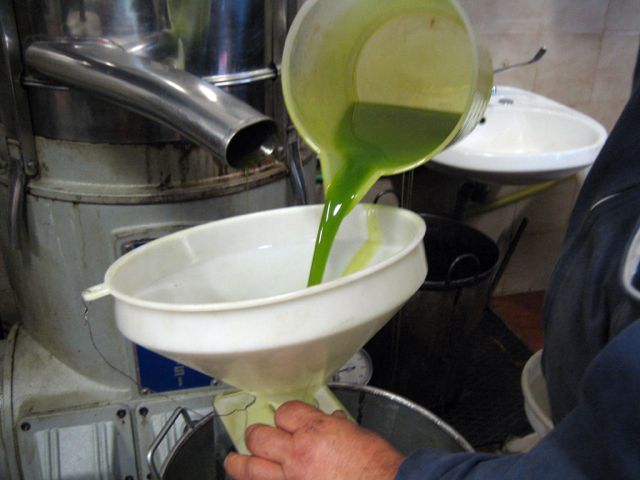
If you’d like to learn more about olive oil, I lead olive oil workshops here in Rome.
My friend friend Nancy leads wonderful olive oil vacation/seminars at Villa Campestri.
And my friend Pamela makes and sells her wonderful organic olive oil and also leads workshops at her B&B Poggio Etrusco.
The frantoio we used this year (the modern one) is called Inches and is located in Morre, Umbria. If you are in the market to buy some truly fantastic olive oil, they have it.
With all the olive oil fraud going on these days, make sure you buy your olive oil from a trusted source. My favorite in the States are Zingermans, Formaggio Kitchen, and Gustiamo.
And Olio2Go has a great selection, including Pamela’s, in the States
There are tons of books out there, about olive oil. I can recommend Ari Weinzweig’s Guide to Good Eating, which has a fantastic chapter on olives and olive oil. (Ari is the Zingerman guy)
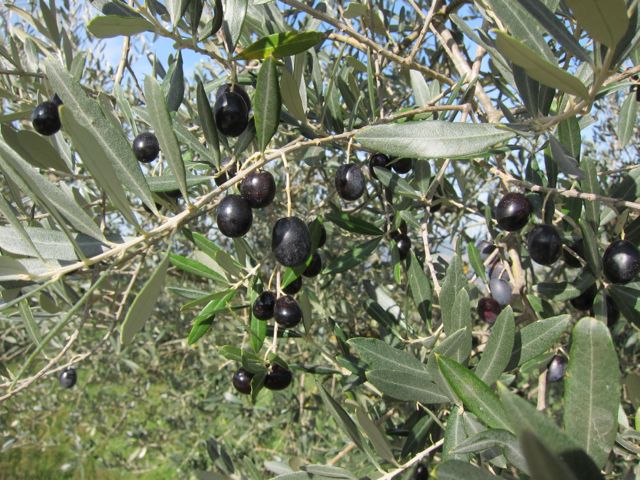
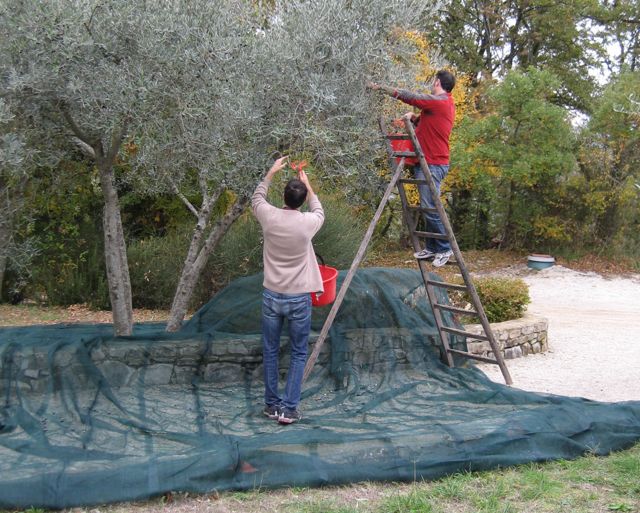
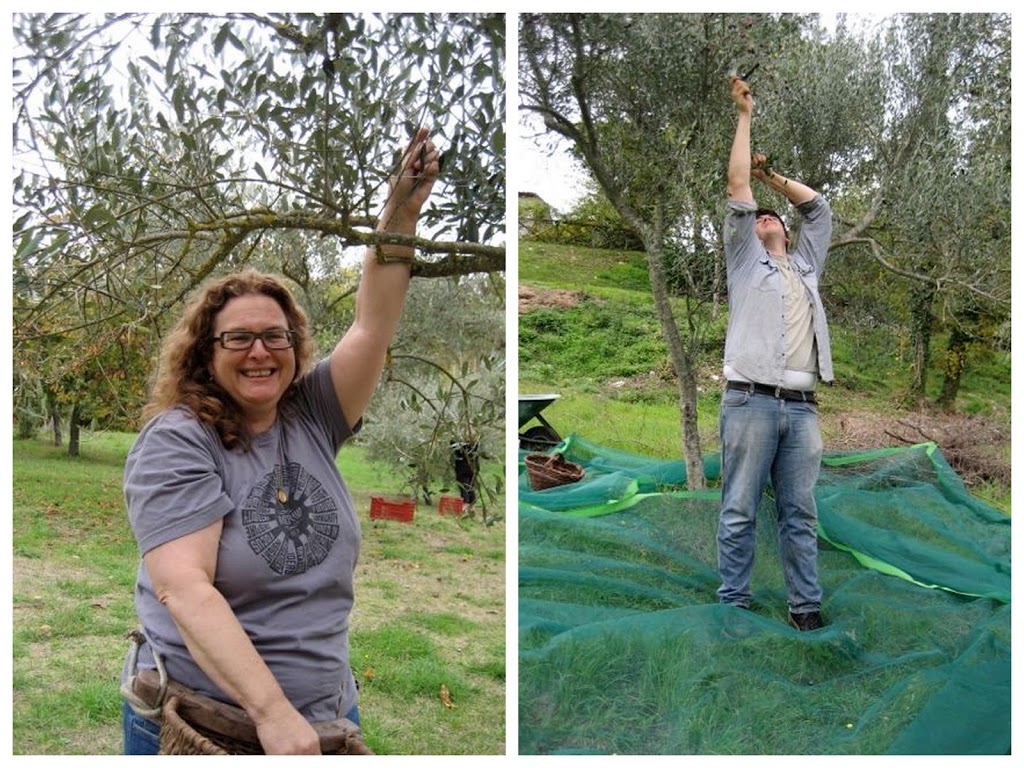
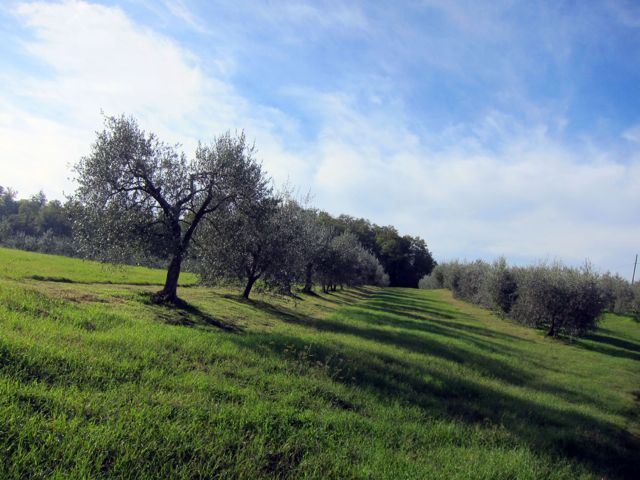
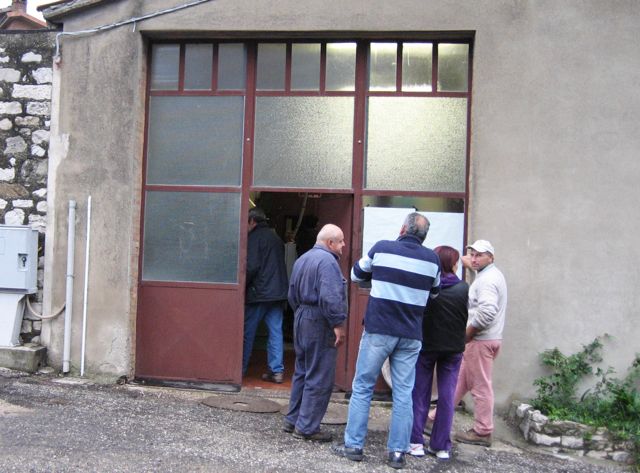
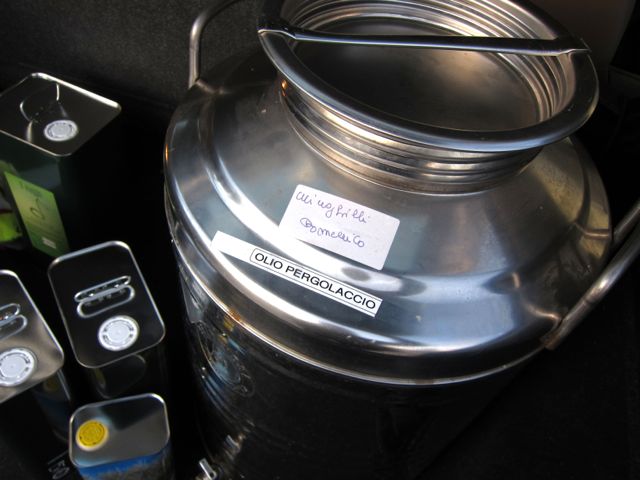
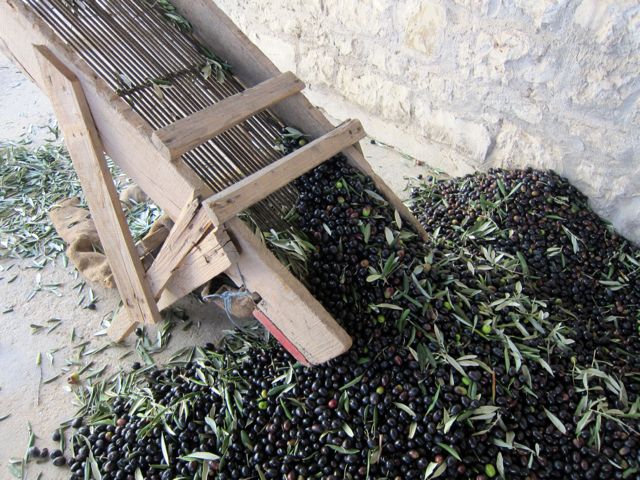
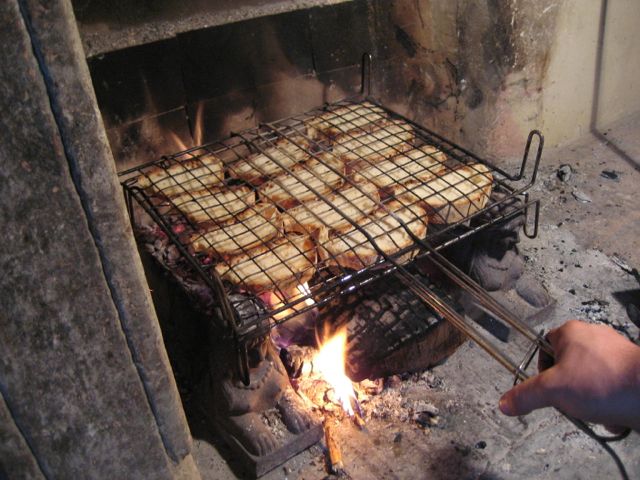
Olive oil is my new obsession. We’ve had a house in Umbria for only 1 year but this was our second harvest. We’re closer to Sabina and perhaps this is why the trees are more productive. This year with 15 trees we harvested 160 kilos of olives. We took them to a frantoio towards Sabina (also my favourite part). Our olives yielded 20 litres of wonderful oil. Until I lived in Italy, I had no idea how amazingly good fresh olive oil could be. My son wants to eat nothing but bread and olive oil from November through January. Our little house was the village frantoio at one time. The stone that crushed the olives rests outside in the garden (basically where it landed when the last owners moved it outside – it’s way too heavy to ever move it). What is now our kitchen was once the place where donkies walked in circles pulling that stone around.
How cool, that your house was the old olive mill!
great video
Thanks!
It sure is a huge subject, and I find that I am learning more and more all the time thanks to articles such as yours. Thanks for this one – I’d LOVE to read an in depth presentation from you. You always explain things so well and bring complicated topics into very clear focus. Any chance you take requests?
Thanks so much but….that sounds like homework!
That was the best little video explanation of the making of olive oil! Thanks Elizabeth
So happy you like it!
Very nice (though was 220 kilos a typo?). If you haven’t read Extra Virginity by Tom Mueller, I think you’d enjoy it. Here is my review of it from the Washington Independent Review of Books.
http://www.washingtonindependentreviewofbooks.com/bookreview/extra-virginity-the-sublime-and-scandalous-world-of-olive-oil/
No, the 220 klilos wasn’t a typo. 220 kilos in the olive scheme of things, is a very low amount. Since you only get about 14% oil. Yes, I know Extra Virginity very well. Those were the issues I was referring to in my comment about ‘fraud.’ I’ll read your review, since I thought the original article was great, but then the book kind of dragged things out without addressing other important issues.
When we were in Umbria last year, we got to spend a day at the Ronci family’s olive grove & mill in Todi, learning more than this Brooklyn city boy ever wanted to know about how great olives make their way into the bottles of oil we buy & use. Now I’ve gotten a refresher course as well. Thanks for a great article.
We’ve used Ronci mill quite a few times.
Fascinating video, Elizabeth. I’m also interested in that wire grilling basket for crostini. What is the name of it in italiano?
That was very interesting, thanks for the short lesson! Looks so yummy.
What a terrific post! We are reviving an old olive grove in Puglia and just participated in the raccolta for the first time this year. Although we have owned the property for 18 years, we’ve tended to come in the summer (never a great time to prune, which is what our secolari trees required). Now we’re here full time, which has been pretty great.
I just blogged about the harvest and would love to link your post if you’re amenable. My blog is: nuovastoria.wordpress.com
I also think we have an LA friend in common . . .
Thanks again for your blog, and for your Rome food app. Indispensable!
Thanks again for the post
Yes, Catherine, you can certainly link to this post. Thanks so much!
we diverted to a frantoio near Paolo Bea when we were there. Got a nice last-minute personal tour which was lovely. Long ago had gone to a small local pressing not far from Pienza, so was fun to see the different ways it’s done. Love the deep green of the new press! One of the nice things about visiting Italia off-season in November…
my cousin imports olive oils from Italy and I love the oils as well as the olives=nothing better than cooking with a touch of italy.
I enjoy your blog and envy those who are able to make the trip with you. Enjoy and continue sharing your joyful life.
jane
Thank you!!!!